News
Sign up for recent trade news that can affect your business:
If your business imports into Canada, you will need to have access to your CARM client portal. Please follow the instructions below to gain access to your account. You can find the official CBSA set up guide here.
Please have the B3 for one of your recent import transactions ready. You can find this document in the billing package you receive from Carson.
If you require assistance with any of the following steps, please contact our office and request help with CARM.
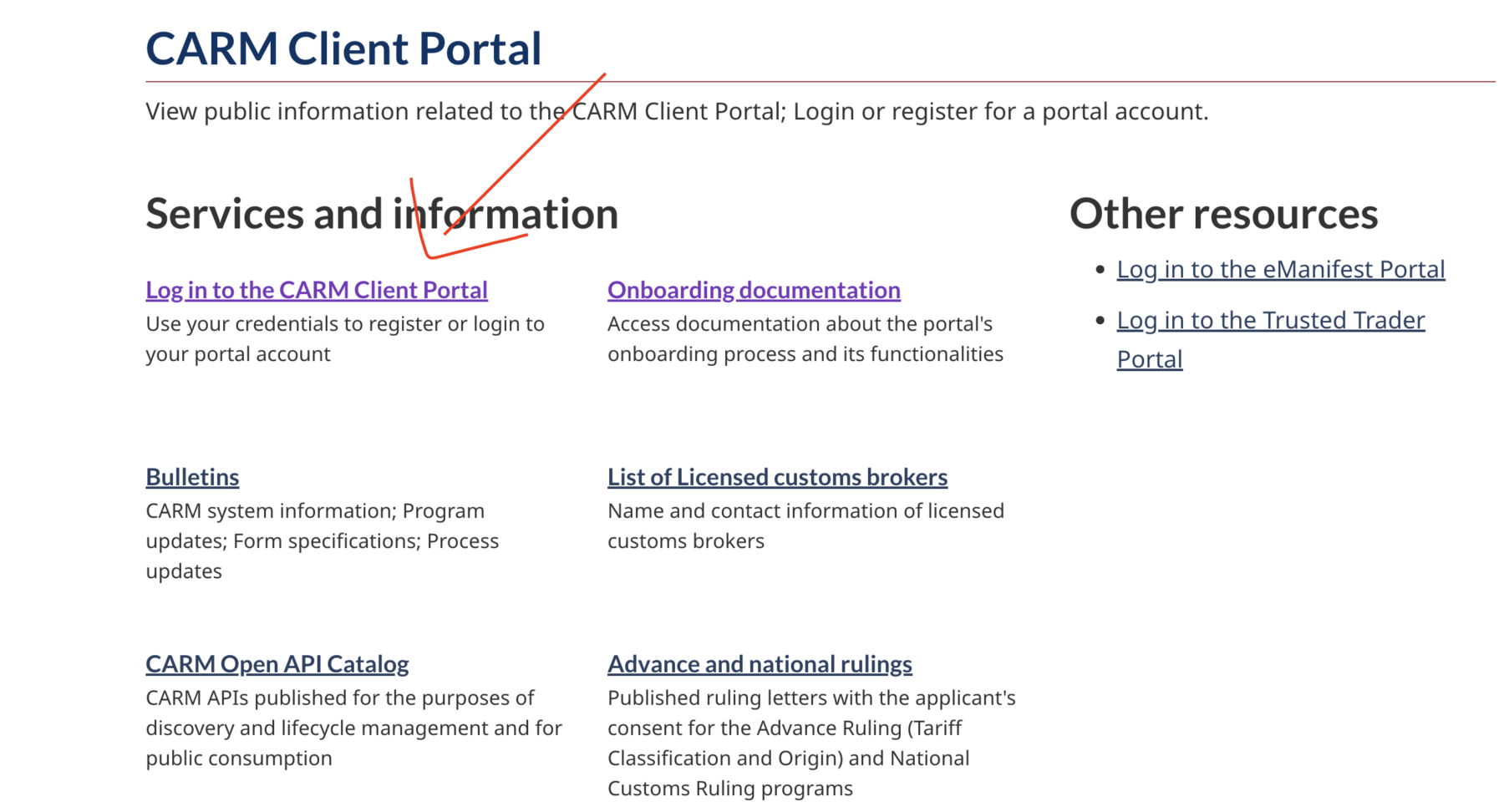
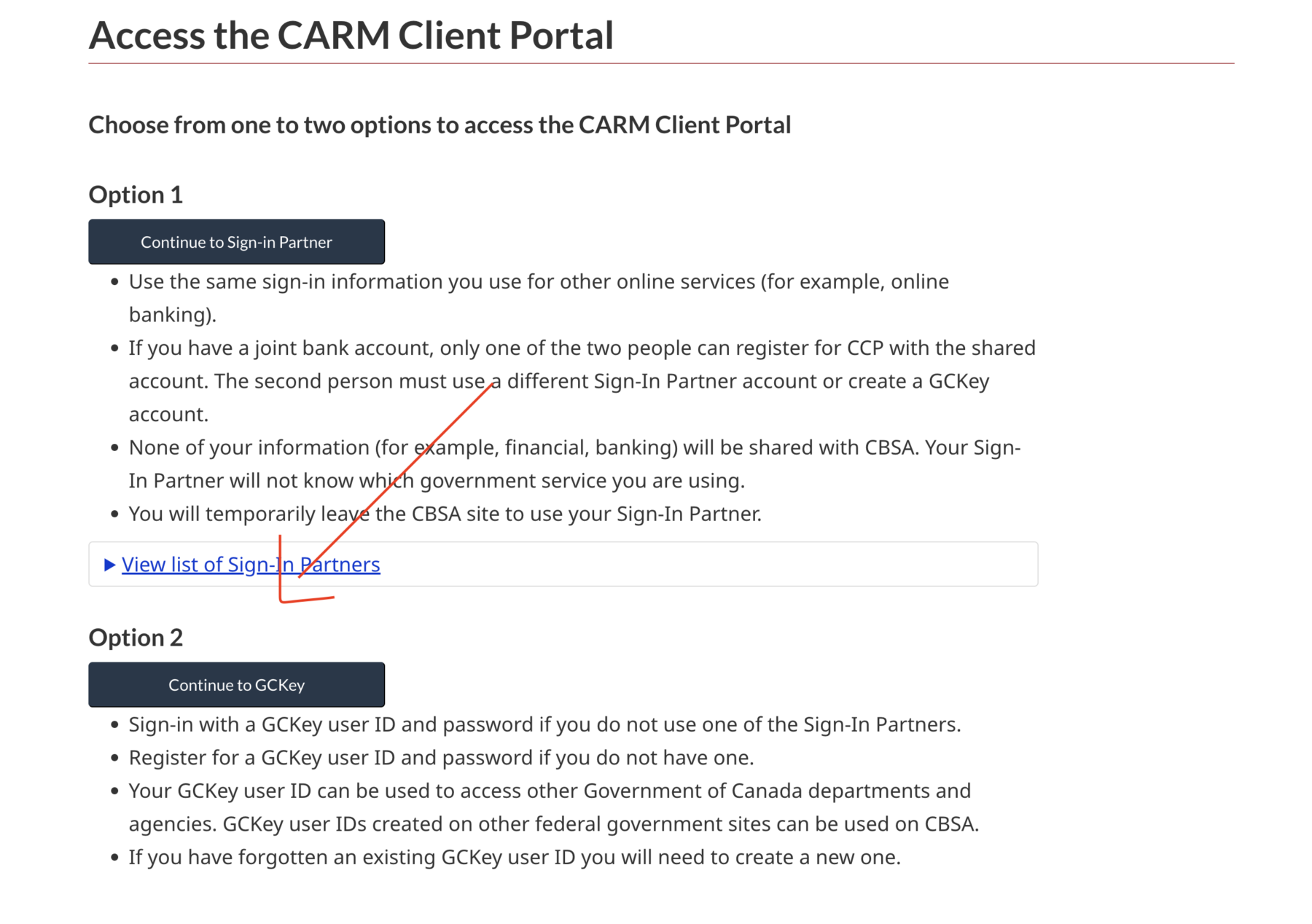
2. Click ‘Option 2: Continue to GCKey’
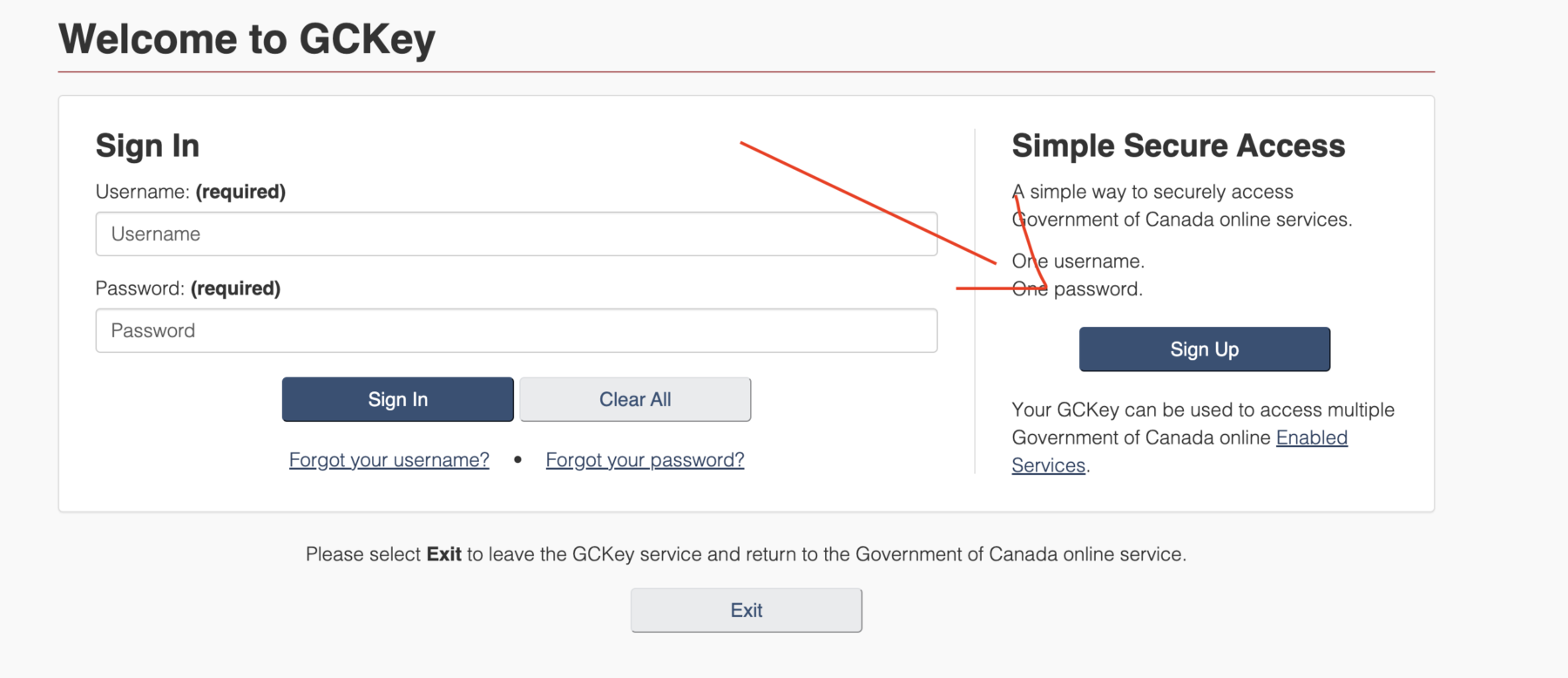
3. Click ‘Sign Up’
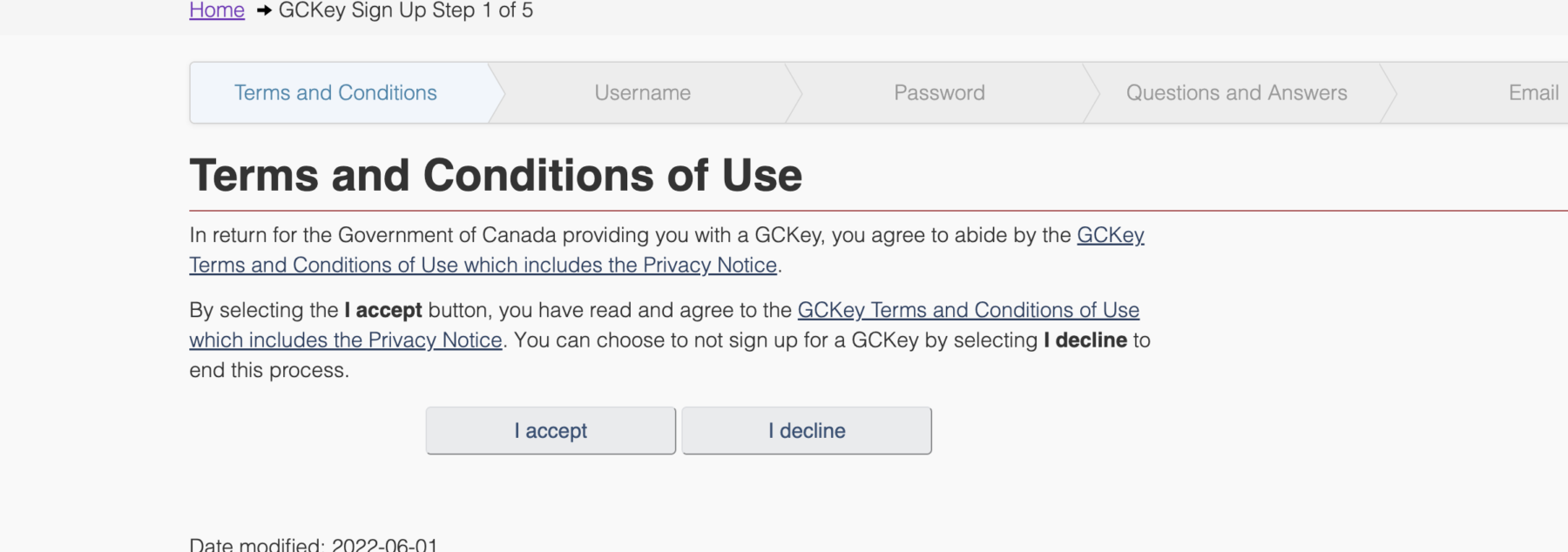
4. Follow the steps to create a user account
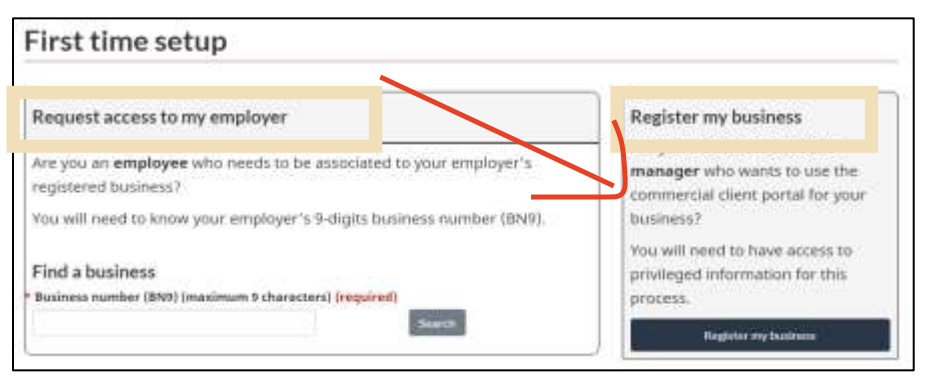
5. Once your individual profile is created, you will be prompted with the ‘First time Setup’ page, from which two options will be available: Request access to my employer, or Register my business. Click ‘Register My Business‘.*
*It is possible one of your colleagues has already created an account for your business. You will be alerted during registration if this is the case (See step 6).
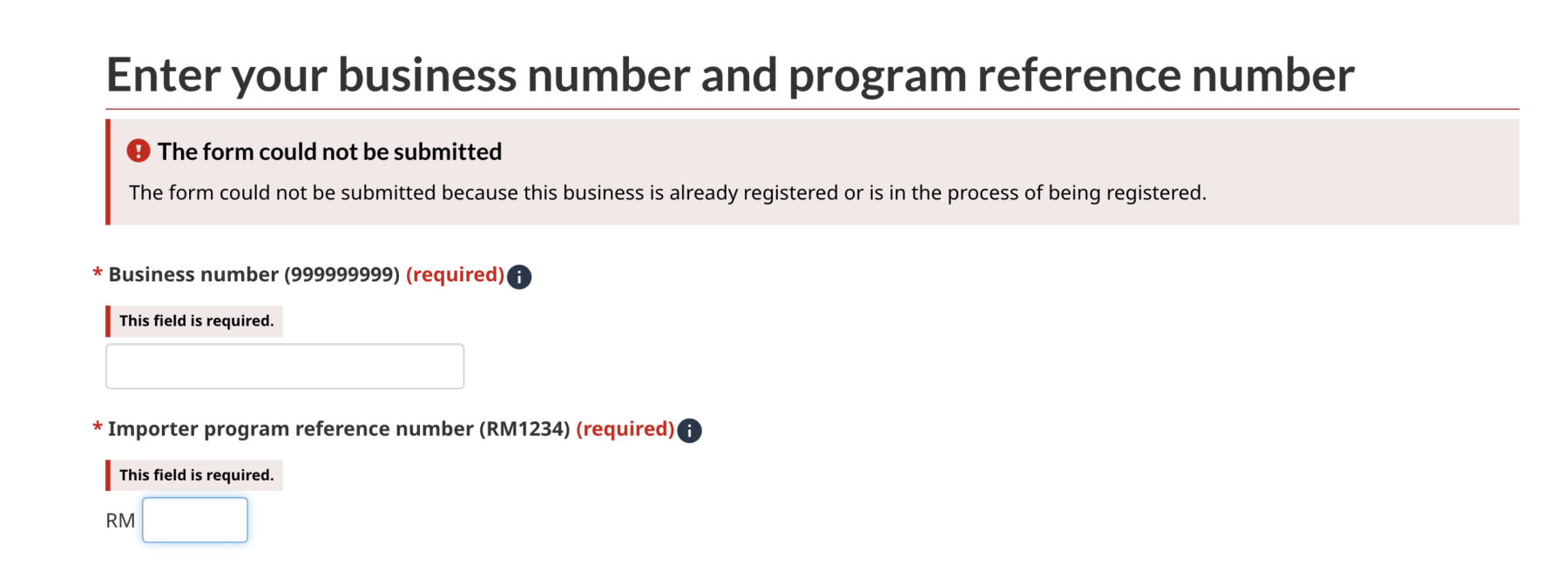
6. During step 5, you may see an error message stating that someone has already activated your business, if that is the case, please follow this guide instead.
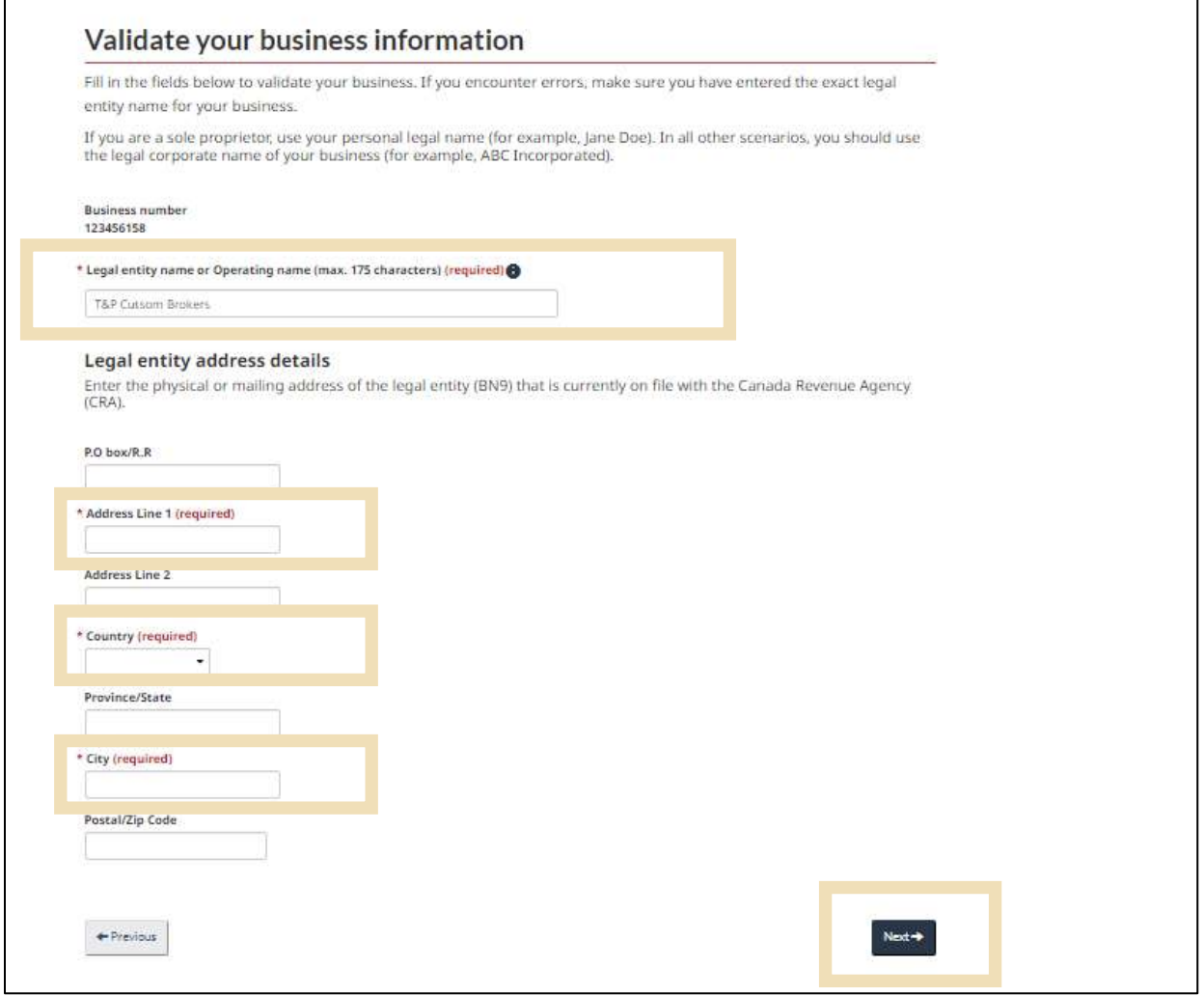
7. Enter the business’ legal name and address. Note that the legal name and address must be exact. This will match what the CRA has on file for your business.*
*If you have issues with this section, we recommend you call the CRA for the fastest resolution. Many businesses have old addresses on file with the CRA.
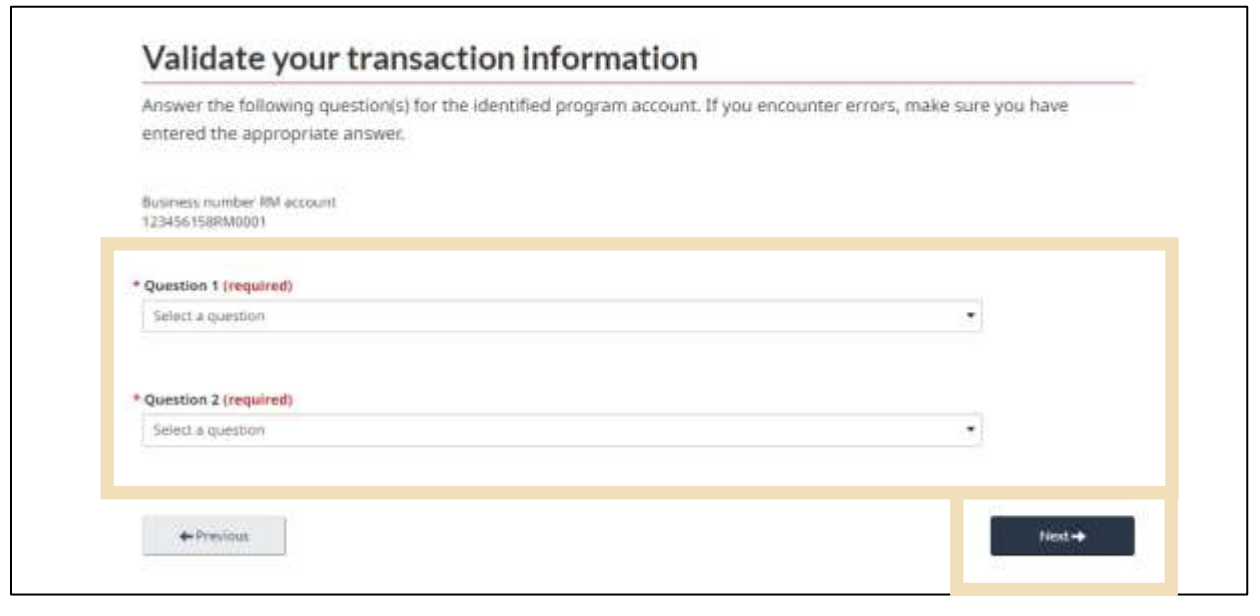
8. Select your preferred security questions. We recommend the following two:

9. For the transaction number question, find a recent invoice from Carson and its associated B3.

10. For the SOA question, you may require our assistance as not all importers receive a copy of this statement. You may contact our office if you are uncertain.*
*If you cannot reach us, you can also contact the CARM support desk.
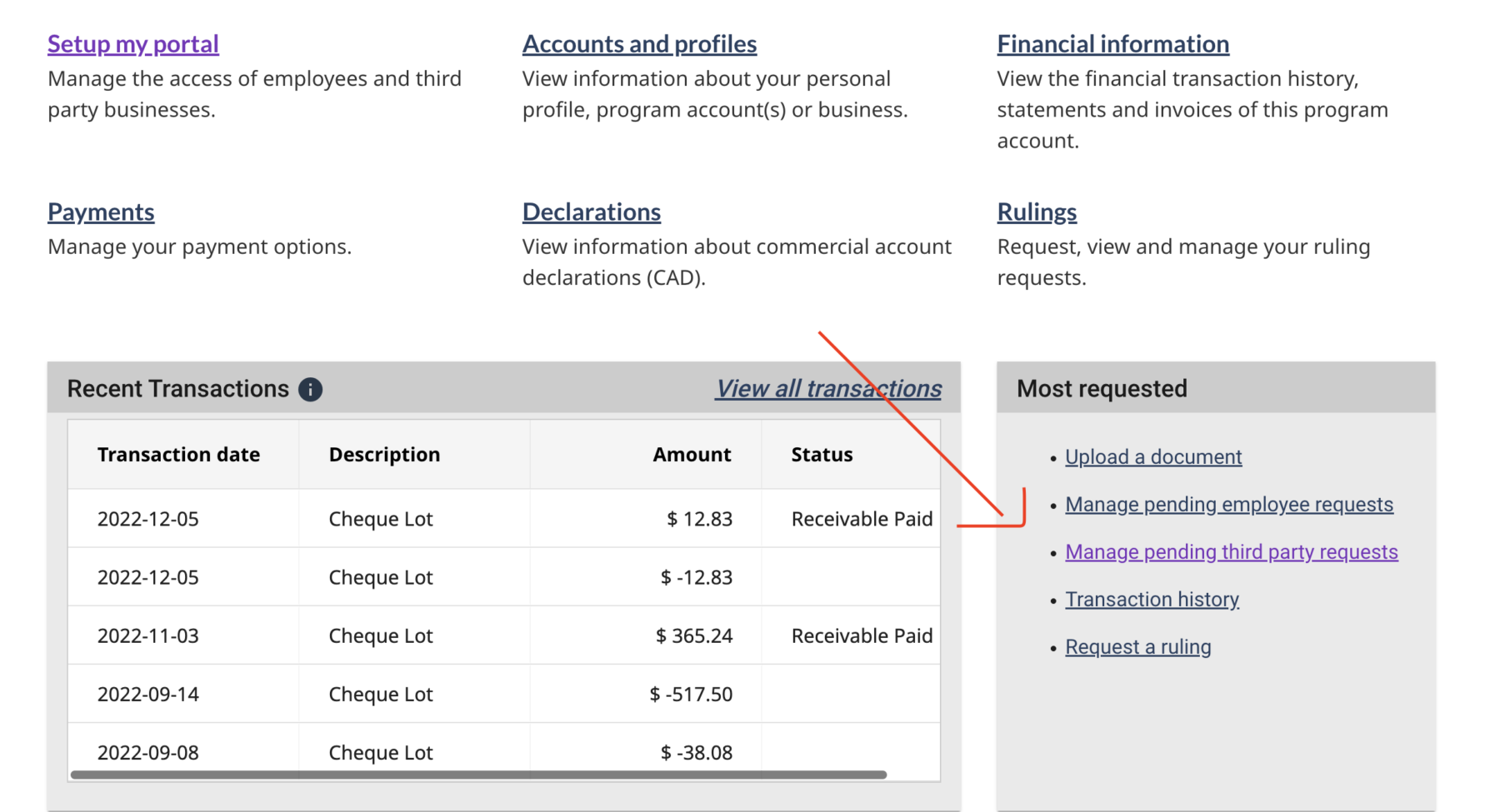
11. Once you have access to the portal, be sure to provide Carson with access so we can continue to serve your account. This can be done by clicking on the ‘Manage pending third party requests’ link.
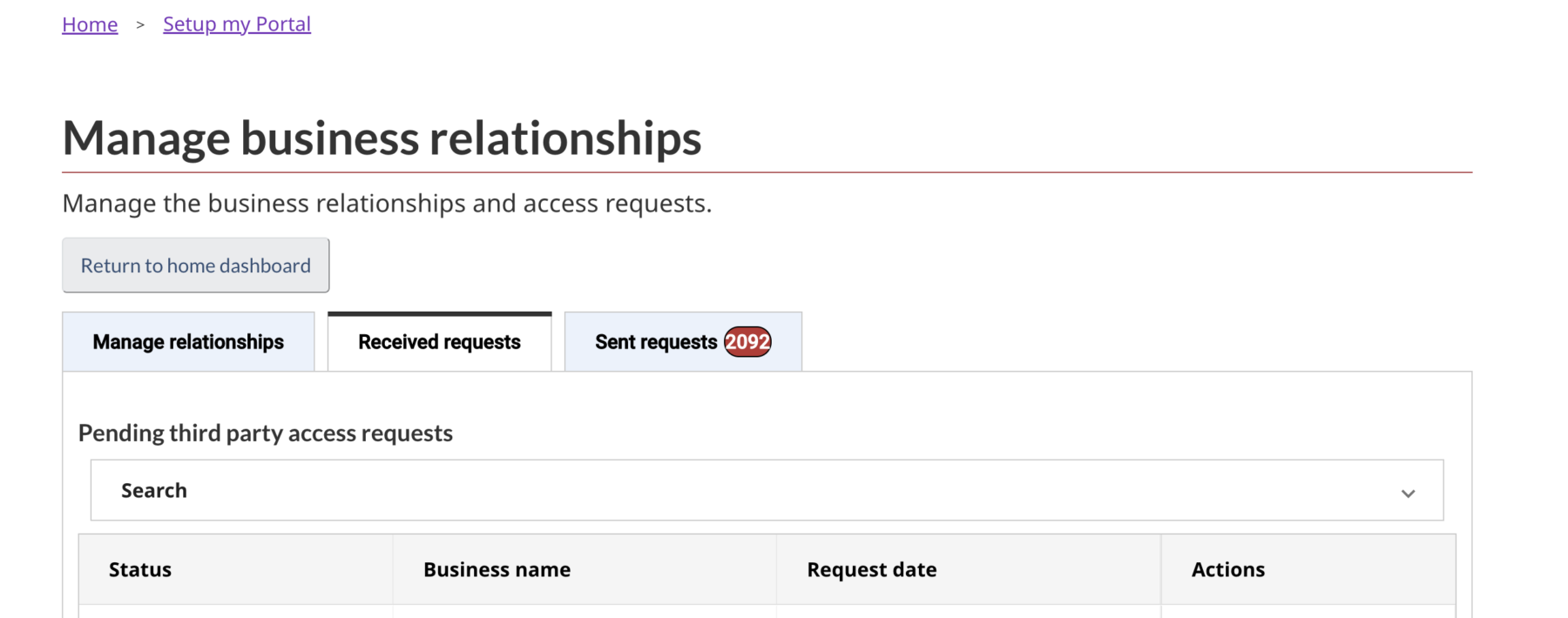
12. In the ‘Received requests’ tab, you should see a request from Carson.

13. Select ‘All Programs’, and ‘Business Management’ as the access type
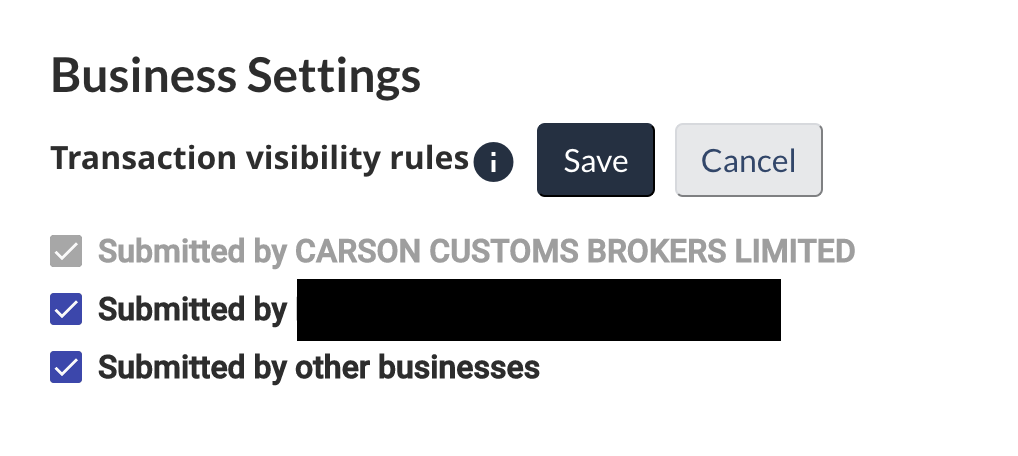
14. For transaction visibility, please check all boxes and click the ‘approve’ button.
*if you are uncertain what visibility or access to grant other providers, please contact us! We can explain exactly what these rules mean.

15. You’re done!
For any additional questions, please call 888-422-7766
*These instructions are for clients who already have access to their CARM portal. If you do not yet have access, please see here.
An essential step in setting up for CARM is to grant Carson access to your business account. This is also known as “delegation.” Without access, we may be blocked from clearing your shipments in phase 2 of CARM so please do not delay this important step.
Please follow the below actions:

Navigate to the ‘Manage Pending Third Party Requests’ page of CARM.
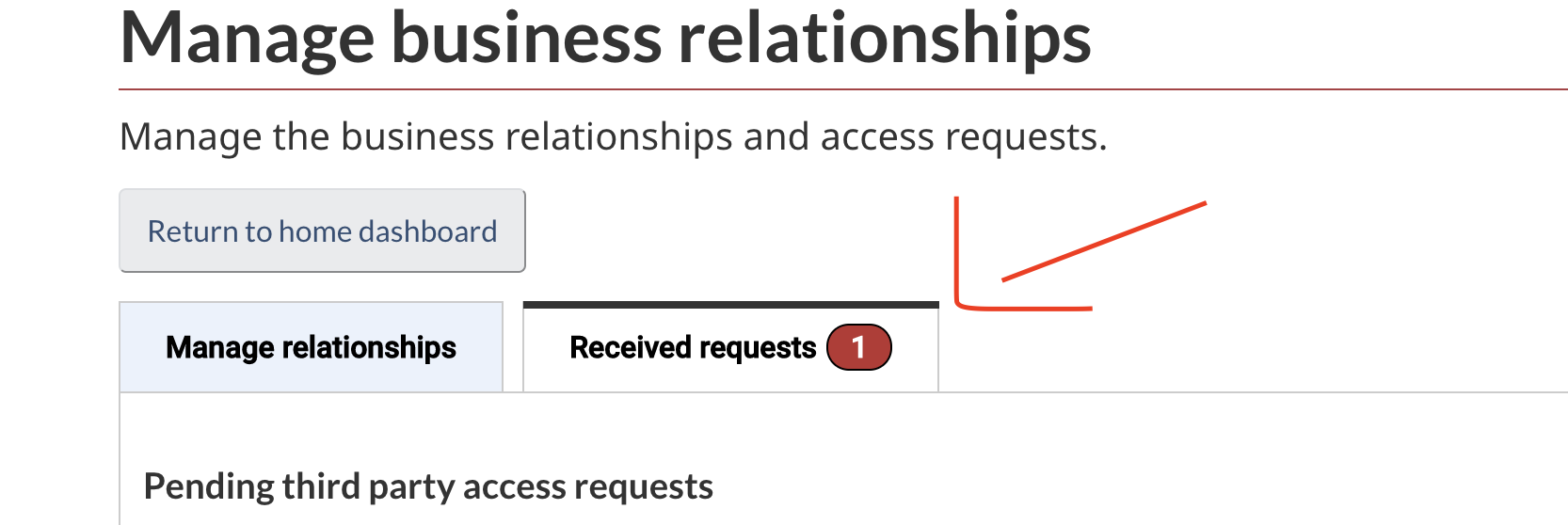
Click on ‘received requests’

Click ‘Approve’ on the request from ‘Carson Customs Brokers’
*Note: if you do not see a request from Carson, please write to carm_at_carson.ca
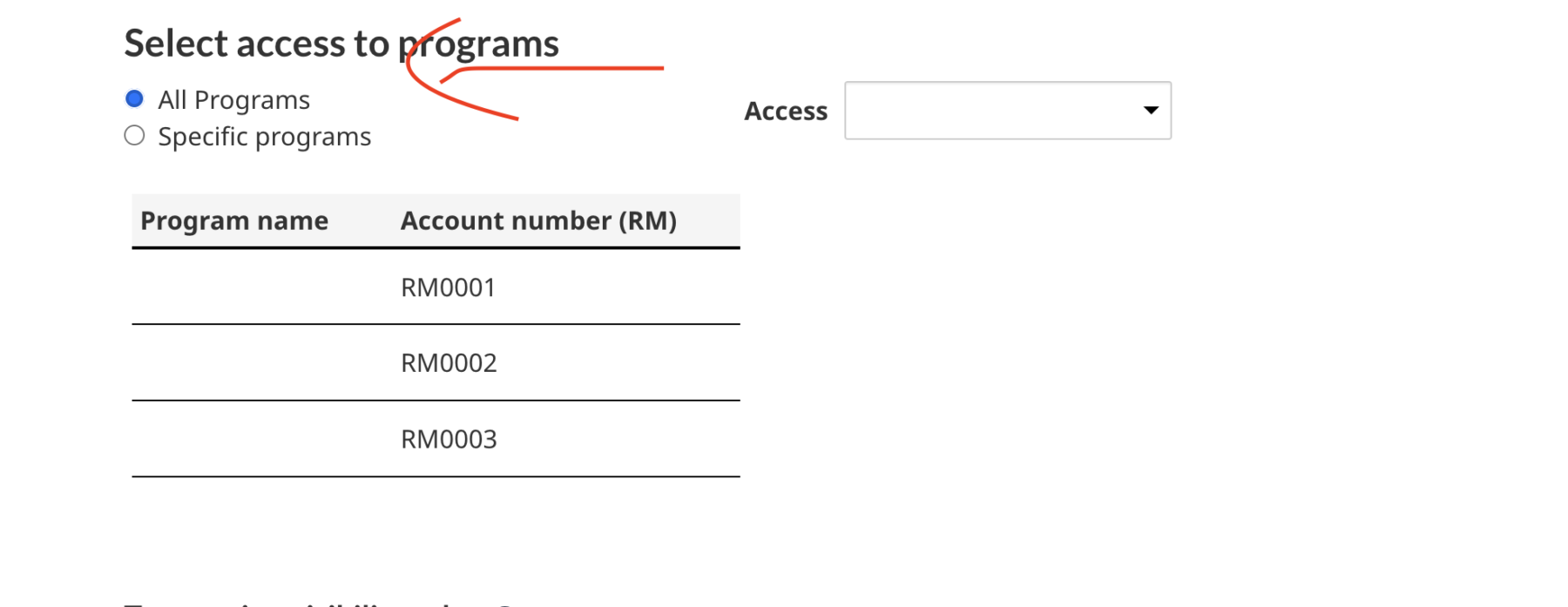
Click on ‘All Programs’
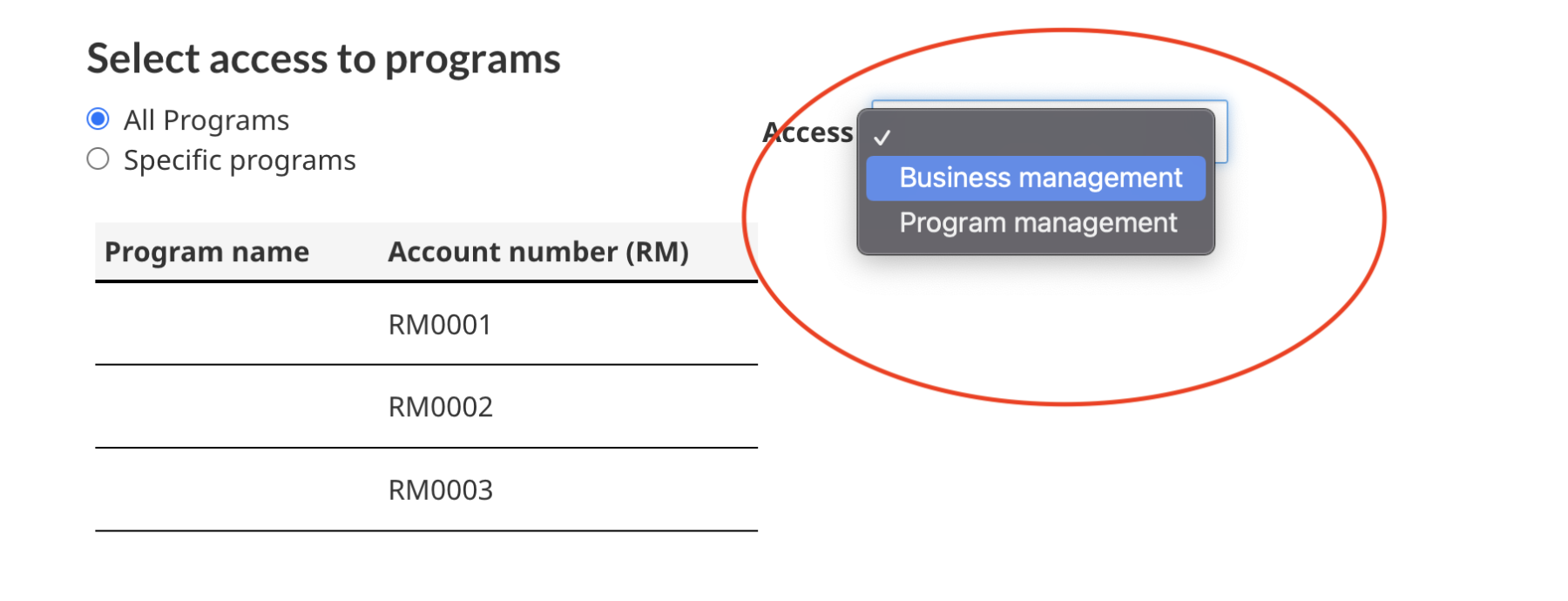
Please select ‘Business Management’ as the access option.
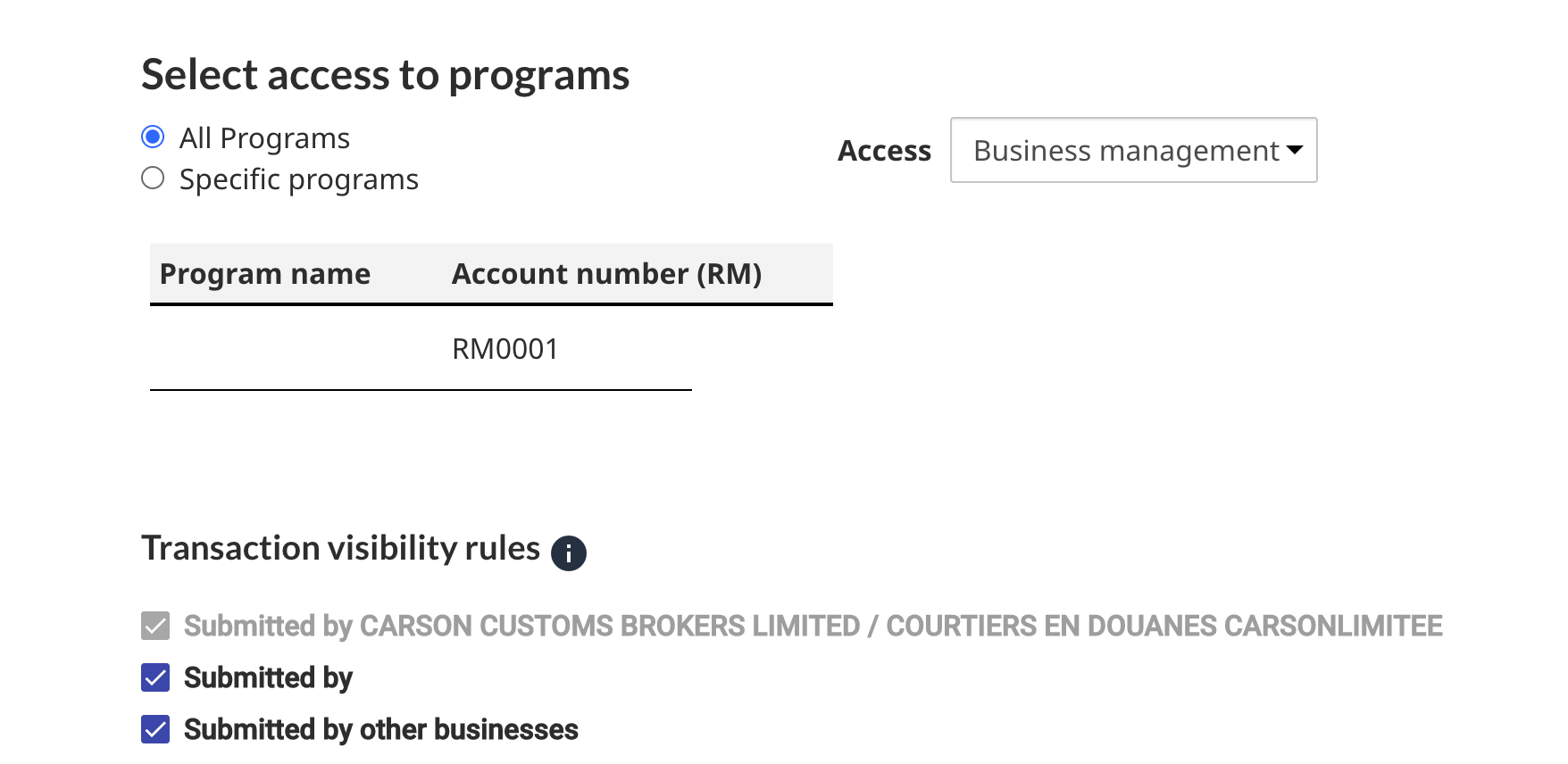
For the ‘transaction visibility rules’, please select all check boxes for full visibility.
This access is optimal for us to provide the best service possible.

You are done! This is the last required step for CARM in Phase 1.
Questions? carm@carson.ca

*Navigate to the CARM client portal by clicking the above link and selecting ‘Log in to the CARM Client Portal’

2. Click ‘Option 2: Continue to GCKey’

3. Click ‘Sign Up’

4. Follow the steps to create a user account
This will include verifying your email address, creating security questions, as well as your contact information, language and email notification preferences. Please note that the preferences and contact details in this step are for you only and not for your whole company.
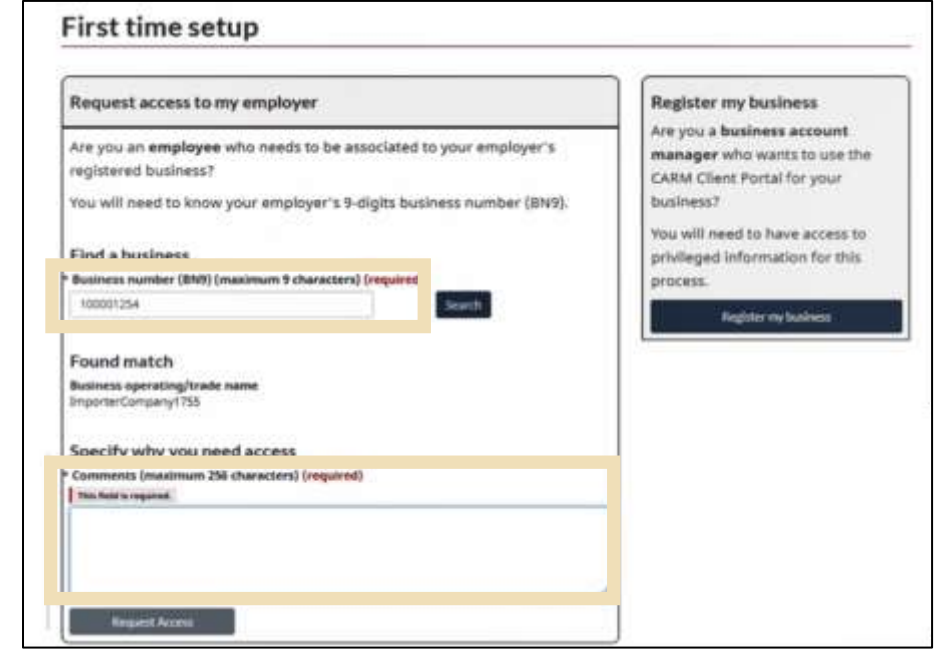
5. Enter your business number as prompted. If you are uncertain of your business number, note that the first nine digits will match your GST number followed by the letters ‘RM’ and your sub-account number, conventionally this is ‘0001’.*
i.e. 888888888RM0001
*You may check a recent invoice/B3 from Carson if you are uncertain.
Within the comments section, please mention your role/title within the company
Important: if your invitation is not accepted within a few business days, please verify that your business profile has been activated. Carson can assist in determining if your business has been registered or not.

6. You’re done!
For any additional questions, please call 888-422-7766, and ask for CARM portal assistance
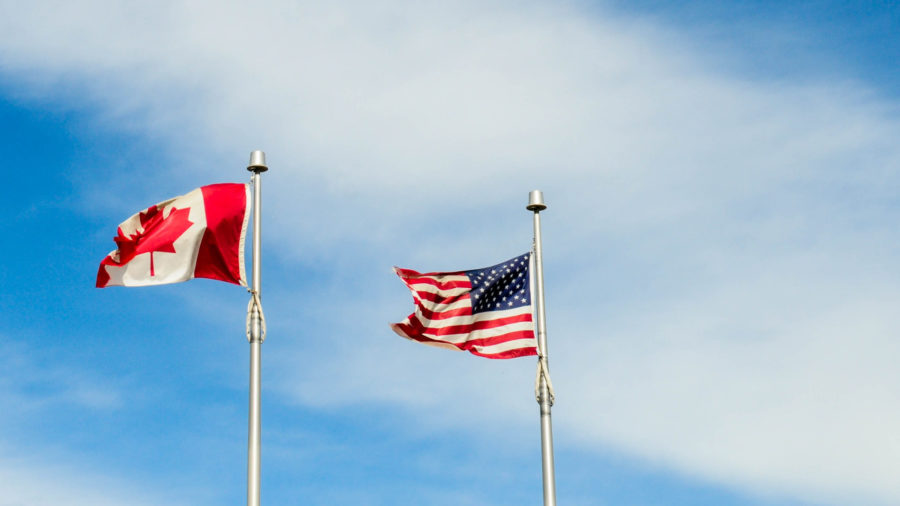
The minister responsible for international trade says Canada is well-positioned and ready to push back against a proposed massive new infrastructure bill that strengthens U.S. President Joe Biden’s Buy American pledge.
The U.S. Senate on Monday began debating the $1 trillion USD spending plan, which promises historic investments in everything from the nation’s railways to its electricity grid and high-speed internet network.
But in a worrying development for Ottawa and Canadian companies, the 2,702 page bill would also strengthen laws that call for U.S. tax dollars and government contracts to be spent on American companies as much as possible.
“My pitch to them is that you don’t have a better partner than Canada and that we are on this shared mission in economic recovery together,” said International Trade Minister Mary Ng on CBC’s Power & Politics today.
Ng said work is well underway “to demonstrate how interconnected our supply chains are and how important Canada is” to the U.S. as the Senate begins to debate the bill.
Prime Minister Justin Trudeau also raised concerns with the infrastructure bill during a call with Biden on Monday.
Right now, the bill — which is likely to be amended — says that “taxpayers expect that their public works infrastructure will be produced in the United States by American workers.”
Since taking office earlier this year, Biden has said repeatedly that investments in U.S. companies will ensure a strong recovery from the pandemic and position the U.S. to fend off China and its more quickly growing economy.
A 2019 U.S. government report stated that of the $290 billion in contracts the U.S. government issued in 2015, Canadian firms got contracts worth about $674 million.
(Source: CBC News)
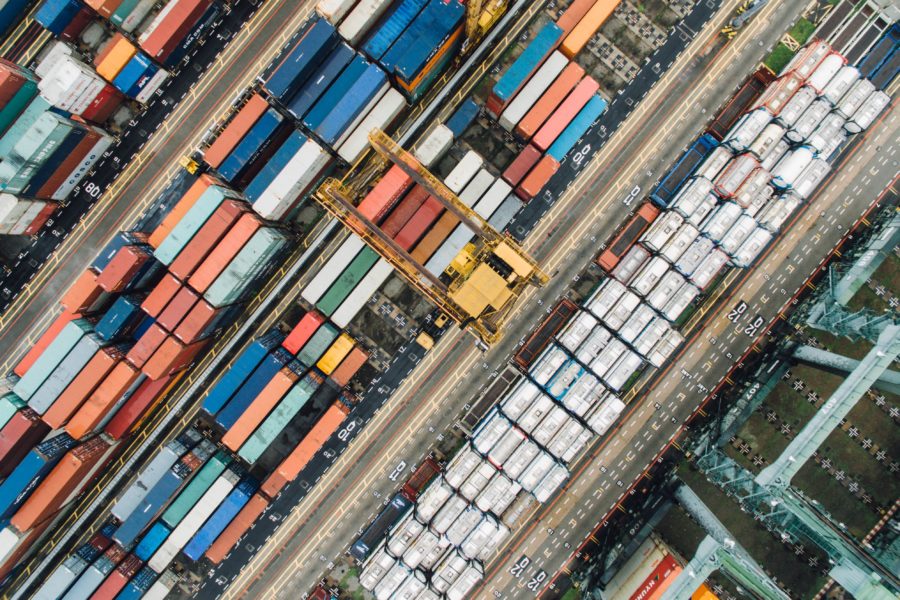
Asia’s renewed surge in Covid-19 infections is compounding supply-chain blockages across the world’s biggest source of manufactured goods. After weathering earlier pandemic waves better than other regions, the fast-spreading delta variant has thrown into turmoil factories and ports in countries that were once among the most successful containing the virus.
The snarls in Asia — where the United Nations estimates around 42% of global exports are sourced — risk twisting their way through global supply chains just as shipments would usually ramp up for the Christmas holiday shopping season. As earlier snags have shown, problems that start in Asian ports can ripple slowly, showing up later as delays in places like Los Angeles or Rotterdam and higher prices for consumers. The flare-ups also worsen an already tortured year for exporters, with shipping costs sky-high due to a shortage of containers and as raw materials such as semiconductors become pricier and difficult to source amid red-hot demand.
“Delta is likely to significantly disrupt trade in Asia,” said Deborah Elms, executive director of the Singapore-based Asian Trade Centre. “Most of the markets have been fortunate in managing Covid well so far. But as Covid continues to spread, this lucky streak is likely to end for many locations.”
In a sign of those concerns, oil prices extended declines at this week’s opening in Asia as the delta variant’s spread has undermined the outlook for global demand. In China, the world’s third-busiest container port was partly shut recently, while in Southeast Asia — among the worst-hit regions — factory executives have stalled production of electronics, garments and scores of other products. At stake is an export boom that shielded trade-driven economies during the pandemic and was expected to fuel a broader rebound. The World Trade Organization had forecast Asia to lead an 8% rise this year in global goods trade. Meanwhile, the supply choke will fuel concerns that rising inflation for Chinese producers or U.S. consumers will prove more than transitory, testing expectations among policymakers for a near-term cooling in prices.
The delta variant — as contagious as chickenpox — infiltrated China’s tough border defenses, seeding the first cases for months in places like Beijing and Wuhan. Indonesia is leading Southeast Asia in cases and deaths, pushing the region toward being among the worst-hit globally as vaccination rollouts lag. While China’s cases are relatively low, its zero-tolerance approach has ensnared the Meishan terminal in Ningbo-Zhoushan port, where all inbound and outbound container services were halted Wednesday after a worker became infected. That shutdown follows the closure of Yantian port in Shenzhen for about a month after a small outbreak, which had ripple effects for international shipping. In Southeast Asia, manufacturing managers saw a slump in activity last month as critical exporters struggled to keep factories running, a sign that Covid might finally be making a dent in the region’s resilient trade.
While Indonesia, Malaysia, the Philippines, Vietnam and Thailand account for a combined 5.7% of global exports, they can greatly impact bigger economies like the U.S. and China, particularly in electronics, according to estimates by Natixis. China imports 38% of its data processing machines and 29% of its telecommunication equipment from the five countries, while the U.S. depends on half its semiconductor imports from the bloc. That extends to export hubs of Japan and South Korea, which have remained mostly on track. Samsung Electronics Co., for instance, last month said revenues in its mobile phone business have been hit by the outbreak in Vietnam.
(This is an excerpt from the16 August 2021 edition of gCaptain)
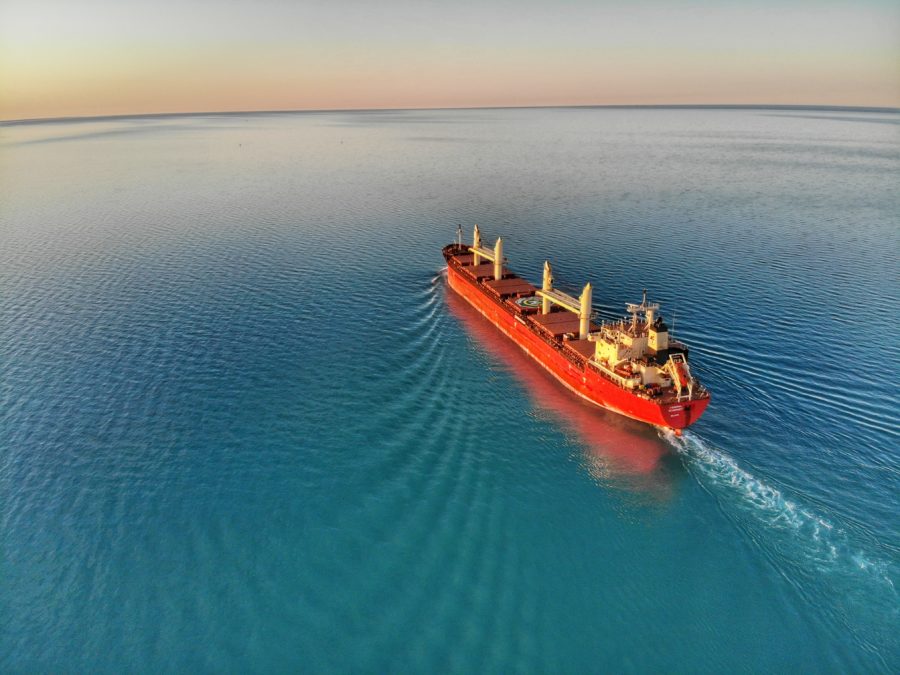
Having learned lessons from the closure of Yantian Port earlier in the summer, a number of carriers are not hanging around waiting for Ningbo Meishan Island Container Terminal to open anytime soon, with several ships opting to skip Ningbo this week.
One port worker at the terminal was found to have contracted Covid-19 yesterday, resulting in the terminal being closed. Tests on the port’s workforce are underway, and the terminal is being decontaminated. For all other Ningbo terminals, the gate-in of export containers is now limited to two days of a vessel’s expected time of arrival.
“It seems the whole Meishan terminal is closed until further notice. All the shipping agents are running around trying to change to Shanghai,” one well placed source told Splash today.
There has been no official announcement yet on how long the terminal will be closed. The outbreak at Yantian in eastern Shenzhen in late May resulted in a partial lockdown lasting four weeks.
The sheer enormity of Ningbo-Zhoushan port, the world’s largest port in tonnage terms, appears to have helped prevent a wider total port lockdown.
Meishan Island is approximately 30 km away from Ningbo’s major container terminal at Beilun, and 60 km away from Ningbo downtown.
Meishan accounts for approximately 20% of the near 30m teu that pass through the port each year. There are currently a total of 41 container services calling Meishan, eight into North America, six for Europe, and two for the Red Sea. The Meishan closure mainly impacts the Ocean Alliance, a grouping made up of Cosco, OOCL, CMA CGM and Evergreen.
Cosco and CMA CGM have already indicated that a number of ships will skip Ningbo this week.
The Covid closure comes at a time where both Ningbo and Shanghai had been experiencing severe congestion, the worst in the world, over the past two weeks. Data provided by MarineTraffic today shows the unprecedented volume of ships waiting for berth space to open up at Ningbo today.
Clients should expect further delays and congestion amidst these issues.
(Source: Splash247)
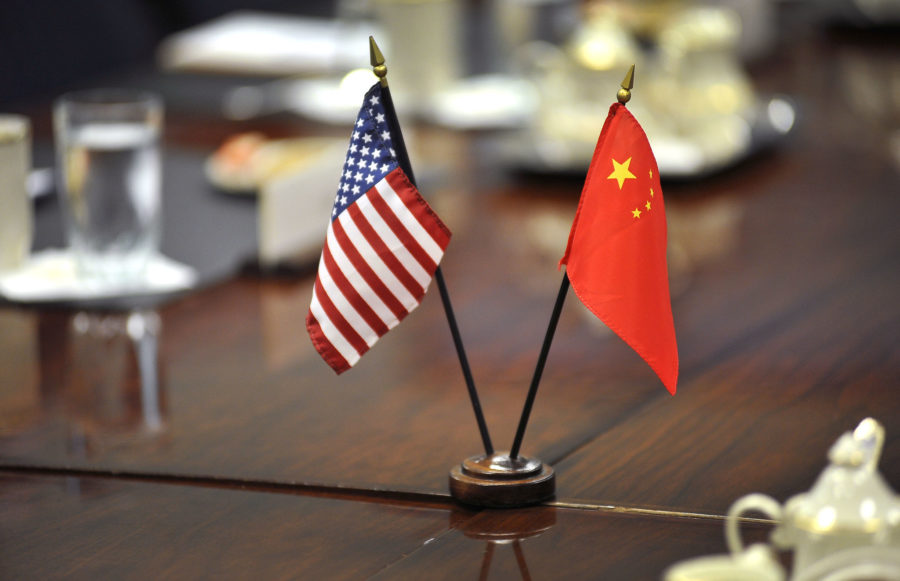
Groups representing America’s largest companies are getting antsy over the Biden administration’s extended review of trade policy toward China.
Groups like the U.S.-China Business Council, the Chamber of Commerce and the Business Roundtable welcomed the president’s pledge during the campaign to reset trade policy toward China after four years of trade-policy-by-tweet from then-President Donald Trump.
Eight months into his presidency, however, the companies want action. And they’re beginning to wonder whether the lack of it on tariffs and trade restrictions indicates that Biden’s brand of being tough on China might not be that much different from his predecessor’s.
“If the Biden administration wants to make the case that they have a different approach, it’s time to lay out the strategy they have promised,” said Anna Ashton, vice president at the U.S.-China Business Council, which led a letter signed by more than 30 corporate groups asking USTR to provide tariff relief and restart trade talks with Beijing. “To the extent they’ve given any clues on strategy, those clues have not really suggested they are planning to diverge from the course we were on at the end of the Trump administration.”
USTR, which is leading the China trade review, says that it is only doing what Biden promised. Even before he won the presidency, Biden’s surrogates warned that trade policy would take a backseat early in his administration, as the White House focused on passing domestic economic stimulus.
The administration says Biden has already moved to reconcile diplomatic relationships with allies by signing a deal to pause the Boeing-Airbus subsidy dispute with Europe, agreeing to work with them to combat Chinese steel flooding global markets, and creating a new Trade and Technology Council with the EU.
“Along with historic infrastructure investments to Build Back Better at home, we are conducting a robust, strategic review of our economic relationship with China and engaging a wide range of stakeholders, including the business community, to create effective policy that puts American workers, farmers and businesses in a stronger position to compete with China and the rest of the world,” said a USTR spokesperson.
(Source: Politico)
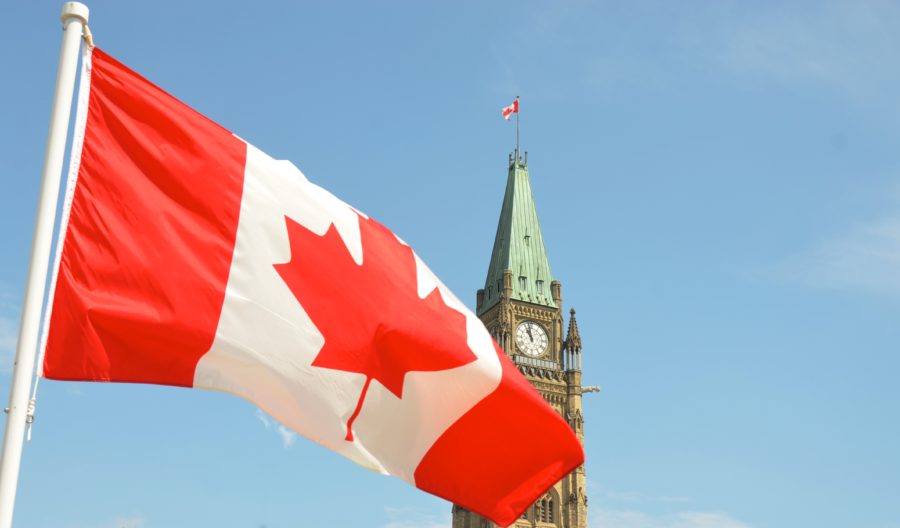
Canada’s trade surplus swung to its widest point since 2008 in June as exports of products like oil surged while imports shrank.
Statistics Canada reported Thursday that exports surged by 8.7 per cent to $53.8 billion. Energy led the way with exports rising by 22 per cent to $11.3 billion. That’s the largest amount since March of 2019.
Cars and car parts were also up, by 14.9 per cent, as were metal and non-metallic minerals, which rose by 12.7 per cent.
All in all, Canada exported $4.3 billion more goods and services to the world in June than it did the previous month. That’s the biggest monthly increase on record, if 2020’s volatile numbers are stripped out.
While Canada was shipping more goods and services to the rest of the world, it was also buying less.
Imports fell one per cent to $50.5 billion as consumer goods fell by 3.7 per cent.
“This category was weighed down by a decline in clothing, footwear and accessories, which Statcan noted was in part due to restrictions in some parts of the country and port disruptions in Asia related to COVID-19 outbreaks,” TD Bank economist Rishi Sondhi said.
Imports of cars and car parts, meanwhile, fell by 3.8 per cent.
One type of good that Canada imported a lot more of, however, was vaccines. Imports of vaccines rose by 74.5 per cent in the month to $745 million. That’s 21 times higher than the amount of vaccines that Canada was importing the same month a year ago, before the country’s COVID-19 vaccination effort ramped up.
Almost all of Canada’s trade surplus came from dealings with the U.S.
Canada posted a surplus of $8.3 billion with the U.S. for the month. With the rest of the world, however, Canada continues to have a trade deficit, although that deficit shrank to $5.1 billion, resulting in a total trade surplus of $3.2 billion.
“Canada’s merchandise trade balance has posted surpluses in four of the first six months of the year, boosted by strong demand arising from U.S. re-openings and the rise in commodity prices,” Bank of Montreal economist Shelley Kaushik said.
“Looking ahead, expect imports to recover as the economy reopens, while still-strong energy prices and U.S. growth should continue to support exports.”
(Source: CBC News)
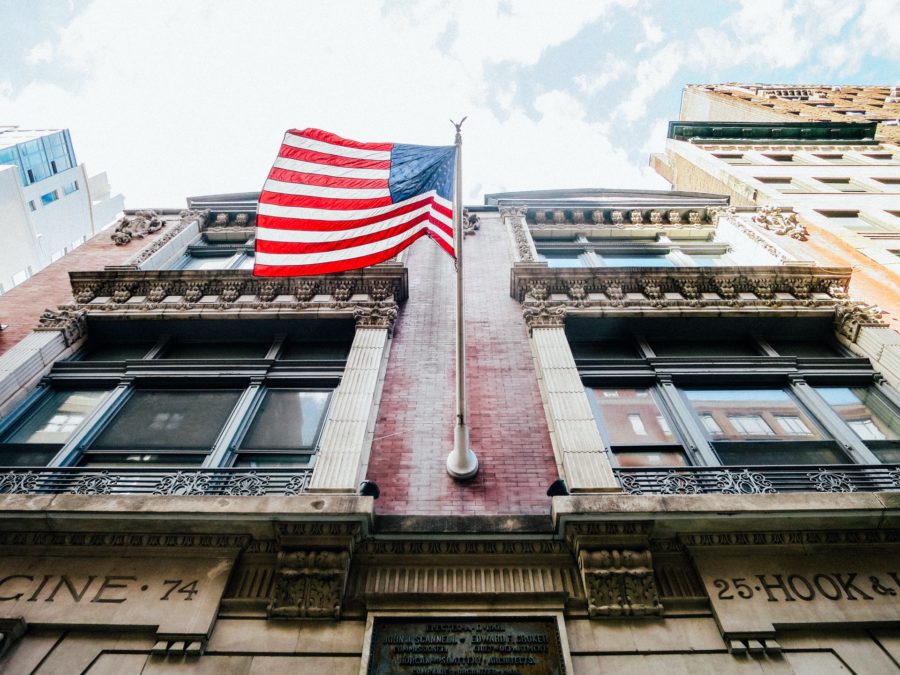
U.S. President Joe Biden has announced his intention to nominate Maria Luisa Pagán as deputy U.S. trade representative based in Geneva, and Joshua Frost to be assistant secretary of the Treasury for financial markets.
Pagán, who was born and raised in Puerto Rico, has spent almost three decades as a trade lawyer in the U.S. government and is currently the deputy general counsel at the Office of the U.S. Trade Representative, the White House said in a statement.
It said Biden planned to nominate Christopher Wilson, a 20-year veteran of USTR, to be chief negotiator on innovation and intellectual property.
U.S. Trade Representative Katherine Tai said both officials would bring valuable experience to their new jobs at a time when the United States is seeking to re-establish relationships with its trading partners and reform the World Trade Organization.
Frost has spent nearly 23 years at the Federal Reserve Bank of New York, most recently as the co-chair of the liquidity risk program for large bank supervision, the statement said.
(Source: Reuters)
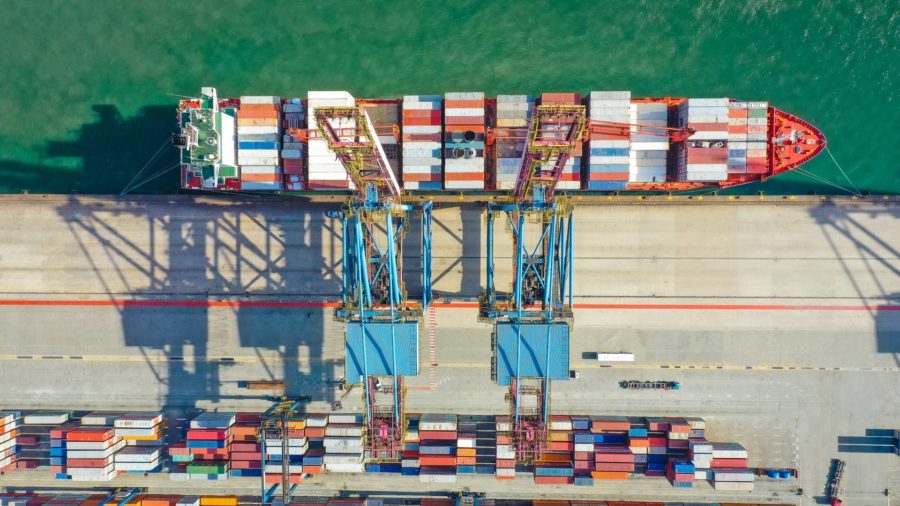
Ningbo and Shanghai, the world’s two largest ports, are experiencing unprecedented volumes of tankers, bulk carriers and containerships back up into the East China Sea as a combination of renewed Covid cases, fierce weather and strong U.S. demand creates further supply chain havoc.
Ningbo-Zhoushan and Shanghai to the north handled 1.17bn and 510m tons in 2020, marking them out once again as the world’s top two ports. In container terms, they’re also on the podium – Shanghai ranked number one in the world with Ningbo-Zhoushan in third place.
The two ports were hit hard by a typhoon late last month and have seen productivity slow as new anti-Covid measures are being carried out at most Chinese quaysides in the wake of the sudden spread of the delta variant of Covid-19 over the past three weeks.
When a Covid-19 outbreak was detected at Yantian Port in late May, operations at the key southern Chinese export hub were slashed by 70% for most of June.
Most ports in the country are now requiring a nucleic acid test (NAT) for all crew, with vessels forced to remain at anchor until negative results are confirmed.
Many ports in the country are also requiring vessels to quarantine for 14-28 days if they previously berthed in India or performed a crew change within 14 days of arriving in China.
While Ningbo and Shanghai have the most amount of ships at anchor waiting for berth space, the global container port congestion looks increasingly worse as the below map compiled today by eeSea shows – the bubbles indicating ships backing up across five continents.